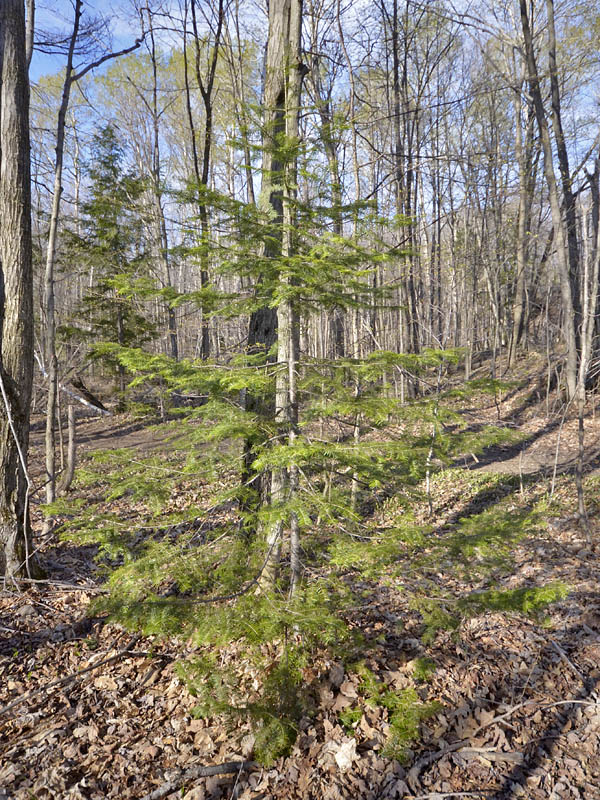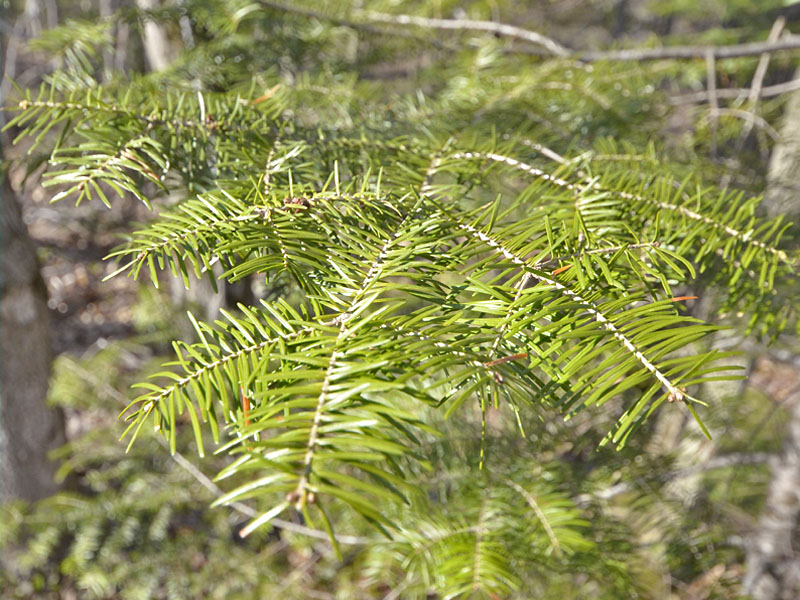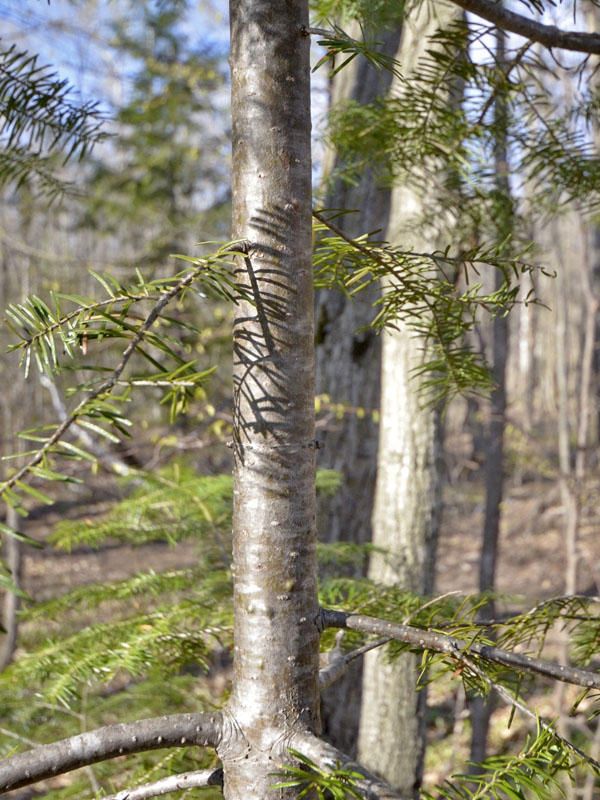
Woody > Abies > Abies balsamea > Abies balsamea
Abies balsamea
Balsam Fir
| Family |
| Pinaceae |
| Genus |
| Abies |
| Species |
| balsamea |
| Category |
| Woody |
| Type |
| Tree (evergreen) |
| Pronunciation |
| USDA Hardiness Zone |
| 3-5 |
| Canadian Hardiness Zone |
| 3 |
| RHS Hardiness Zone |
| H7 |
| Temperature (°C) |
| -40 - (-23) |
| Temperature (°F) |
| -40 - (-10) |
| Height |
| 15 - 21 m |
| Spread |
| 3 m |
Photographs
Description and Growing Information
Flowering Period
| General Description |
| The widest range of any Abies in North America. Makes its best growth in cold climates. Valued for its spicy fragrance, neat shape and and bluish-green colour. |
| Landscape |
| Mainly used as a specimen tree and even a Christmas tree. Does not hold needles very long in hot dry conditions. |
| Cultivation |
| Short lived in cultivation. |
| Shape |
| Narrow pyramidal shape with branches extending to the ground. |
| Growth |
| Medium |
| ID Characteristic |
| Leaves are horizontally arranged in 2 lateral sets with a V-shaped parting between. Upper surface is a shiny dark green with interrupted lines of stomata towards the tip. Typical balsam odour. |
| Pests |
| Favoured by spruce budworm, woolly adelgid and several canker diseases. |
| Habitat |
| Edges of forest and near damp locales such as lakes and swamps. |
| Bark/Stem Description |
| Smooth and pale grey with large resin blisters on young trees. On mature trees the bark becomes roughened and reddish-brown. |
| Flower/Leaf Bud Description |
| Small, brownish, resinous and seemingly varnished. |
| Leaf Description |
| The needles, arranged in two ranks are blunt, flat and short, 2 - 3.5 cm in length with a rounded apex, dark green above and whitish beneath. |
| Flower Description |
| Male, catkin-like. Develops from the underside of the leaf axil, yellow colour. |
| Fruit Description |
| Cones are 5-10 cm in length and may be purple to olive in colour. The scales are slightly elongated with sharp pointed bracts and are soft at maturity. |
| Colour Description |
| Dark green with white stomatic bands below. |
| Texture Description |
| Medium. |
| Propagation |
| A stratification period of 15-30 days in moist conditions at approximately 3°C is recommended. |
| Ethnobotanical Uses (Disclaimer) |
| A resin was once extracted from the plant as an aid in pulmonary conditions. The resin was also used as a varnish in watercolours, glueing microscope slides and sealing birch bark canoes. The light wood is suitable for pulp, the production of boxes and crates and lumber. It may also be grown as a Christmas tree. |


